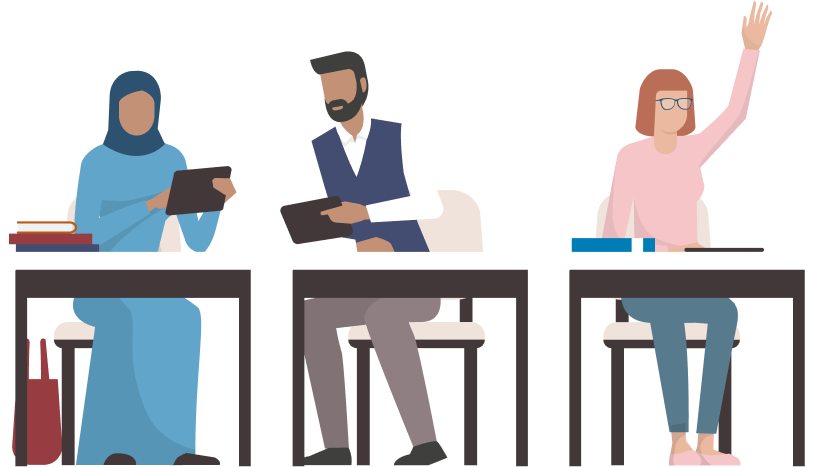
MBO Education route ROC
After the first year, you will go to another route. This can be the Z-route, the B1 route or the education route. You have agreed with your Client Director which route you will participate in. This explanation is about the education route that you will follow at the MBO.
1.
What is it?
You start with this route if it appears after a test that further education is your goal.
This is the preparation for an MBO education. You follow this at Yonder. This consists of:
- Dutch lesson (NT2)
- English lesson
- To calculate
- Study skills
- Career guidance
- Introduction to Dutch Society (KNM)
An internship. The internship can be done through the Yonder network. You can also come up with a proposal yourself.
2.
What is the goal?
We prepare you for a good start at the MBO.
3.
How long does it take?
The training lasts two years.
The first year looks like this:
- Dutch | 19 weeks 5 times 3 hours a week + 19 weeks 4 times 3 hours a week
- English | 19 weeks | 2 times 2 hours a week | starts in the second half of the year
- math | 19 weeks | 2 times 2 hours a week | starts in the second half of the year
- Knowledge Dutch Society | 19 weeks 1,5 hours a week | starts in the second half of the year
- Career orientation | 19 weeks | 1,5 hours a week
- Study skills | 19 weeks | 1,5 hours a week
- Internship | 19 weeks 4 to 8 hours a week | starts in the second half of the year.
You will do an internship at an organization that matches your interests and your future.
- Coaching and guidance (weekly fifteen minutes per student)
The second year looks like this:
- Dutch | 38 weeks | 4 times 3 hours a week
- English | 38 weeks | 2 times 2 hours a week
- Mathematics |38 weeks | 2 times 2 hours a week
- Internship | 38 weeks | 4 to 8 hours a week
- Study skills | 19 weeks | 1,5 hours a week
- Career orientation | 19 weeks | 1,5 hours a week
- Coaching and guidance | weekly 0.25 hours
You have a full learning/working week in both years.
4.
For who is it?
For status holders who have finished the start-up class and the bridge class. The test must show that this route best suits your possibilities. You can be a maximum of 28 years old. Do you want to do a BBL (MBO training in combination with work) after your integration? Then you can also participate in this training. You can also follow the B1 training for this.
To participate in this training you will need:
- You must score sufficiently on language learnability. That is, how well you are able to learn a new language.
- You must have sufficient command of English (MBO 4 level)
- And very important: you must be motivated, have the time and space to study.
Are you 30 years or older? Then see what is possible via the lifelong learning credit.
5.
What does the contact look like?
You go to school 5 days a week. You will also be given homework assignments. So you are really working for a full week. You have your own tutor. Together with him/her you look for an internship that matches your interests as much as possible and in which you see a future.